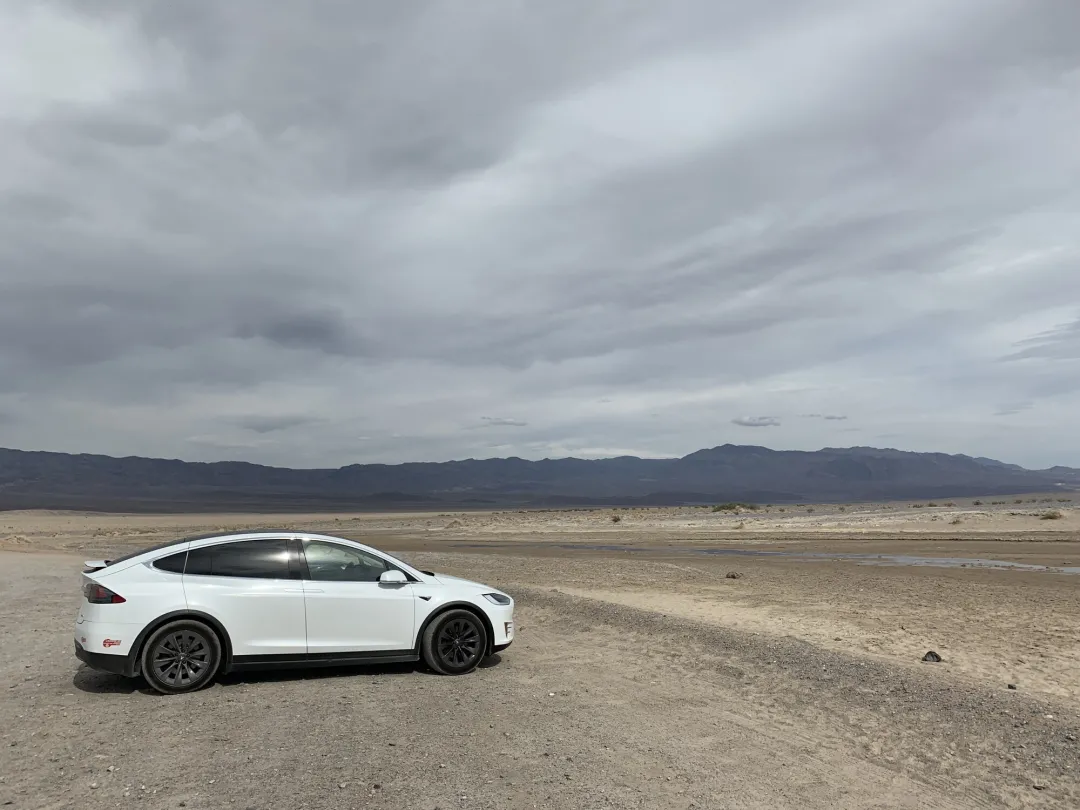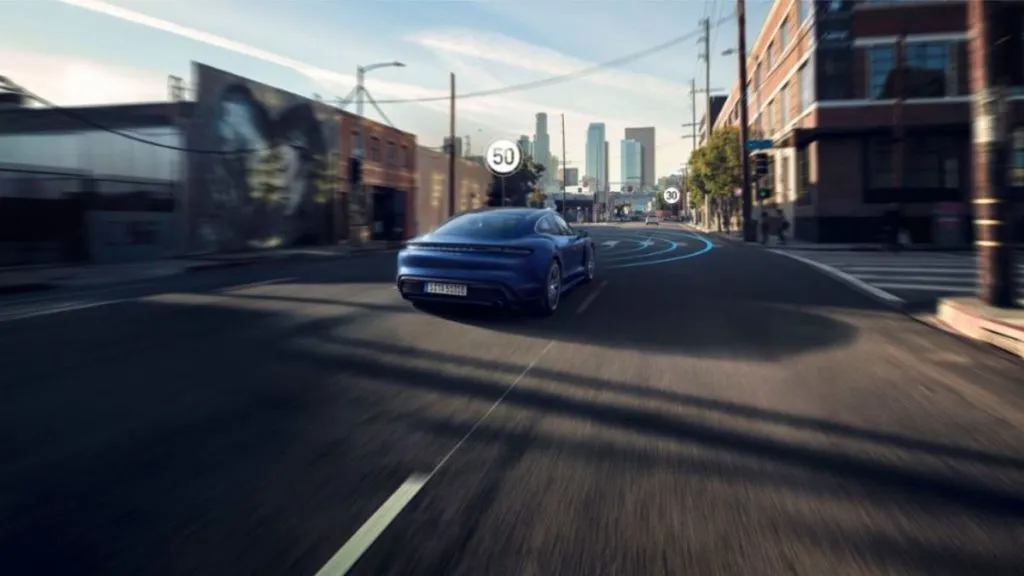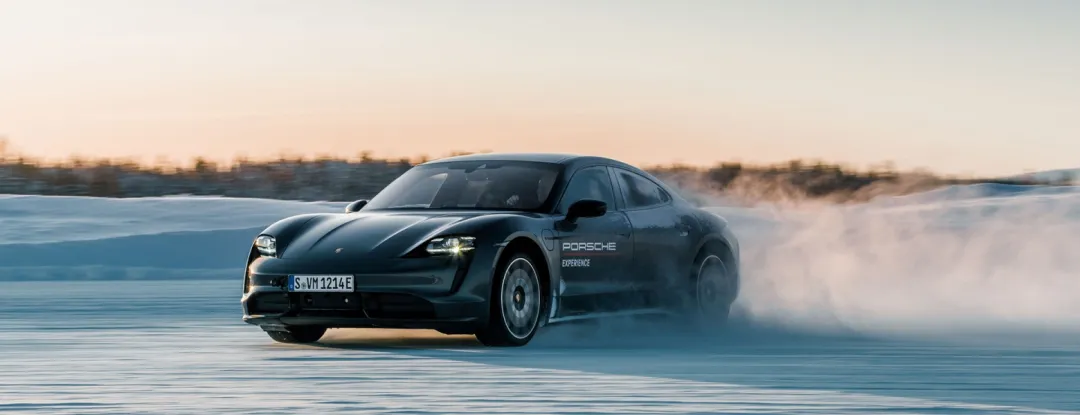Author: Chris Zheng
Starting from November 2020, Dr. Karl-Thomas Neumann began to publish his comparison review of Porsche Taycan and Tesla Model X on LinkedIn platform.
With more than 30 years of experience in the automotive industry, Neumann has served as CEO, Chairman, and President of companies such as Continental Group, Volkswagen China, and Opel; In 2018, Neumann joined the American new car company Canoo to be responsible for mobile travel business, and then served as a director of multiple intelligent electric vehicles industry chain companies such as Apex.AI, 4D imaging radar company Ouster, and Hyundai Mobis.

He is a loyal fan of traditional car driving pleasure, owning Porsche Taycan and 911 GT3. At the same time, he also has a very open attitude towards new products in the automotive industry, with two years and 25,000 kilometers of driving experience with Tesla Model X.
With such a person comparing Porsche and Tesla in his “workplace circle” is destined to be not boring. Neumann’s sharing covers five dimensions: kinetic energy recovery, driving assistance, car system, driving experience, and charging experience. The following compilation from LikeStar channel summarizes it:
I have been driving a Tesla Model X in the Los Angeles area for about two years, and I love it every day. Now that I’m back in Europe, I want to try something new and have chosen the most technologically advanced car I can buy from Germany’s OEMs. Porsche Taycan.
In this series of articles, I will try to compare my daily experience with these two excellent cars fairly. I look forward to any feedback from you and hope we can have a heated discussion on this topic.
Kinetic Energy Recovery
Let’s start with kinetic energy recovery.
Tesla’s strategy is that when you release the accelerator pedal, kinetic energy recovery will generate huge resistance, and only when you need to completely stop the car (instead of deceleration), you need to step on the brake pedal. In daily use, Tesla’s strong kinetic energy recovery is the most power-saving.
I really like strong kinetic energy recovery and find that this design makes driving very easy.
One drawback is that when the Tesla is fully charged, the car will provide completely different driving feedback. Releasing the accelerator pedal no longer generates brake force, which can be very unsettling. Another limitation is that if you brake by stepping on the brake pedal, you are actually wasting energy because you are using calipers to produce friction.
 As I mentioned before, I like it, and I had concerns that the Taycan would not have regenerative braking or only have low regenerative braking when the accelerator pedal is released. The Taycan’s strategy is different – it requires you to step on the brake pedal to engage regenerative braking. The first half is regenerative braking, and the latter half employs caliper braking during emergency stops.
As I mentioned before, I like it, and I had concerns that the Taycan would not have regenerative braking or only have low regenerative braking when the accelerator pedal is released. The Taycan’s strategy is different – it requires you to step on the brake pedal to engage regenerative braking. The first half is regenerative braking, and the latter half employs caliper braking during emergency stops.
After driving the Taycan, I must say that I prefer Porsche’s strategy. It is definitely a more complex and efficient system. I like it because the feedback is always consistent. If the battery is fully charged, the Taycan’s brakes will apply caliper braking throughout the entire travel.
The fusion of regenerative and caliper braking in the Taycan is so perfect that you actually can’t tell when it’s shifting (as an old braking engineer from Mainland Group, I know how difficult this is, and Porsche did it beautifully!). The huge amount of regenerative braking (265 kW) has greatly reduced the actual usage frequency of mechanical caliper braking. (The maximum for Tesla Model 3 is 77 kW, and I couldn’t find any data on Model X. Does anyone know?)
In addition, the Taycan has three modes of regenerative braking:
- Standard mode: The vehicle naturally glides when the accelerator is released.
- Regenerative braking mode: Regenerative braking is stronger, and there is a slight (too light in my opinion) drag.
- Automatic regenerative braking mode: This is very interesting, but Porsche underestimated its usefulness: cameras and radar provide information on the degree of regenerative braking necessary. I really like this mode when driving on country roads. When the Taycan approaches a car in front or enters a curve, it automatically increases the degree of regenerative braking. The feeling is very natural.
I found one strange thing about the Taycan: every morning when you get in the car and drive away, it takes half a mile to engage regenerative braking. Like I said earlier, you can’t feel it, but you can see it on the regenerative braking progress bar on the dashboard and the higher energy consumption. So Porsche, why did you design it this way? Do you want to ensure that the owner uses caliper braking at least once a day?
My conclusion is: Porsche clearly wins over Tesla in this round. Score: 1-0.## ADAS
@Ingo Albers (Porsche Chassis & ADAS Vice President): Thank you for providing structured feedback. We have indeed developed the so-called brake refresh function to ensure that your brakes are always in perfect condition in case of emergency. The Taycan has such a high kinetic energy recovery efficiency that in some cases, the brake pads may not be used for a long time due to customer or driving style.
Advanced Driver Assistance System
I have a Tesla Model X with the so-called “Full Self-Driving” option package in California, which is a 2018 model. Now I have a Porsche Taycan with the Innodrive option package (mine is a 2021 model).
The Model X has a total of 8 cameras, 1 millimeter-wave radar, and 12 ultrasonic sensors. When I drive the Model X, the car often receives exciting updates wirelessly, including new features and sometimes even new user interfaces. Even the hardware has been upgraded to the so-called HW 3.0, Tesla’s own chip, which provides 144 Tops of computing power! (About 40 times the computing power of a factory computer!)
I must admit that the ability of the Tesla to navigate on and off ramps and highways has left a deep impression on me. It can drive at high speeds, enter the HOV lane for zero-emission vehicles, and navigate through ramps without user intervention. It’s not always perfect, but there are rarely any situations that really require my intervention.

The Taycan’s Innodrive system has one camera and one radar (I couldn’t find much documentation, so please correct me if I’m wrong). In fact, it has some innovative features. The Taycan can recognize upcoming speed limits, curves, exits, and intersections via map and camera data, and adjust the speed dynamically in Porsche’s typical dynamic way through algorithms. I love Innodrive and find it a very useful and relaxing feature in daily driving.

What I don’t like is that the Taycan cannot add a small surplus to the maximum speed. If the current speed limit on the road is 80 km/h, the Taycan is limited to 80 km/h, while Tesla supports a small upward float, such as 85 km/h.### Cloud-based Remote Control
Yes, I’ve heard it before: Who cares about Porsche’s infotainment? You should enjoy driving your Porsche. I’ll write about the driving experience next time (which I really enjoyed!), but today I’m writing about cloud-connected services. I believe it’s important because, like most other car manufacturers, Porsche claims they want to create a future of sustained growth around such products.
I think Tesla’s dominant position in this field has been overlooked for too long. Now Porsche has proven this point forcefully. They offer 29 services for Taycan, many more than Tesla does. Except for some initial issues when setting up my account and connecting it to Taycan, these services now run smoothly.
The remote control for Porsche Taycan is controlled by the Connect App. It’s very practical and allows the driver to have a comprehensive view of the vehicle’s status, as well as controlling the temperature, charging and navigation. This is done very well, better than Tesla.
However, the app has some stability issues. In about 30% of the cases, the app cannot connect to the car at all, or the process takes a very long time. For example, when the car is parked in a garage and cannot receive 4G signal, the app cannot connect to it.“`
Taycan cannot connect to WiFi. Tesla can connect to WiFi and download large amounts of data for its software updates via WiFi. We are all waiting for Taycan’s first wireless software update.
Connect App needs an update because many services are not as stable as expected, sometimes unable to connect and sometimes crashing. Tesla is much more stable. I believe this is also related to Tesla’s simpler service architecture. Tesla is an account system, either you have data service or you don’t. Porsche wants to charge you for services and obviously integrates a overly complex authorization system behind it.
I really like that Apple Music is integrated in Taycan. You can seamlessly connect to your account in the car without using Apple CarPlay (I don’t like it because it takes up the screen). Once Grace Note detects a song, you can even add any song you hear on the radio to your Apple Music library. Good job Porsche! (But still unstable, sometimes disconnected, or the Apple Music icon disappears for a period of time, making the service unavailable.)
Summary: Porsche seems to be really trying hard. They have more and usually better services than Tesla, but there are two big problems that make them fail in this aspect: notorious instability and lack of true wireless updates. The latter makes Tesla such a magical product because it constantly updates new features and improves the user interface.
As of now, Porsche is 1:2 with Tesla.
Driving Experience
Anyone who has the opportunity to drive an electric car will be excited about the acceleration and driving pleasure, with almost no noise and endless torque from a standstill.
So, there is no reason to complain about Tesla cars. They have more torque than anyone needs and insane acceleration. I have driving experiences with Model X and Model S, both of which are good cars driving on highways in the US and Germany. They do feel a bit like Mercedes (sorry!). They are very comfortable and filter out bumps, but are a bit unsuitable for my taste of driving.
Porsche Taycan is here! I can say unequivocally that this is the best driving experience of all the cars I have driven! Honestly, I would leave my 911 GT3 in the garage and drive the Taycan along winding country roads at high speed.

“`The combination of such a low center of gravity, the precise Porsche chassis, and the hyper-accurate rear-wheel steering make for an experience! Being glued to the asphalt or gravel track is just too much fun. And when you enter any of the sport modes, the fun factor only increases. The rear axle gearbox kicks in, the Taycan drops a gear, and that provides you with the extra torque. At around 85 km/h, the rear axle switches to second gear, with perfect support from the Porsche electric sport sound. It’s just beyond imagination.
Meanwhile, I really like the comfort of the Taycan during long-distance trips on the highway in normal or range mode. It’s still the perfect definition, a not too soft chassis, full of confidence.
There’s no doubt this section is a crushing victory for Porsche. This means we’re still drawing: 2-2. Let’s see how the next section goes: charging.
Charging experience
I’ve driven a Tesla Model X in Los Angeles for about two years, covering about 25,000 km. I’m impressed by the Model X’s overall energy consumption of 22.6 kWh/100 km.
Due to the pandemic, my Taycan has been driven only 5000 km. We compared Southern California’s climate with Europe’s winter weather. So far, Taycan’s total average energy consumption is 26.8 kW/100 km, which is actually very good considering the lower temperatures and faster driving speeds on the German highways. When traveling long distances, I use the range mode and drive at around 150 km/h on those wide-open roads.
Charging is one of the most interesting experiences of using the Taycan. While Tesla plans charging based on its own Supercharger stations, Porsche has also done very complex route planning, but based on public charging stations along the way, which can lead to a lot of problems. Tesla’s charging stations always work (one may be temporarily out of service, but usually they work), and you can just plug in the charging gun and start charging your car immediately. On your car’s map, you can see the Supercharger station and the current occupancy rate. I’ve never encountered any bad surprises.
Charging with the Taycan can be full of surprises:
- A whole group of 6 IONITY charging stations not working
- Charging stations not communicating with the car
- Charging interrupted
- Charger not accepting the Porsche charging card
- Unable to register the credit card with the charger
The list of problems can go on and on. There seems to be no end to it.The charging experience is often unreliable and worrisome. Every time I approach a charging station, I worry whether it will work and whether I will be able to unlock it. Here, Tesla has a huge advantage with its proprietary and fully controlled system.
If I manage to connect to an 800 V fast-charging station (preferably from IONITY, since they do not require authorization through a card but work like Tesla with “plug and play”), the charging speed is very fast. The screenshot below shows how I was able to charge 40 kWh of energy in just 10 minutes. The charging route planning usually plans very short charging times (10-15 minutes), and it can even prepare the battery temperature ahead of time for the fastest charging. Tesla is also fast, but definitely slower than Porsche.
Overall, Tesla clearly wins in this section because of its higher efficiency (although not as high as expected), but mainly because it provides a reliable charging experience that Porsche cannot offer, as it has to put up with scattered charging station environments.
This is the last section of this comparison, and I need to give a conclusion: Tesla wins.
Regenerative braking – Porsche
ADAS – Tesla
Remote control App – Tesla
Driving experience – Porsche
Charging experience – Tesla
Anyway, I love my Taycan and do not regret buying it. It is a great driving machine that puts a smile on my face every time I drive it.
It is obvious that the overall manufacturing quality and materials used by Porsche are absolutely superior, and they will not have incidents like a black screen and system restarts in the middle of driving as Tesla has (which can be terrifying experiences).
However, the charging infrastructure and its reliability need improvement, and the online services provided by Taycan are very disappointing because of their slow and unreliable speed. This is a shame for Porsche, and I hope it will be fixed soon (through wireless updates!?).
Final thoughts
On the eve of the Taycan launch, Klaus Zellmer, CEO of Porsche North America, said our first pure electric sports car (referring to the Taycan) would be a true Porsche.Dr. Neumann’s presentation perfectly demonstrated this point: Porsche did everything they excel at with the Taycan, including craftsmanship, handling, and mechanical quality, while everything related to intelligent features in the automotive industry fell apart, including cloud-based remote control, assisted driving, and charging station interaction.
On the other hand, Tesla took a completely different approach from Porsche. Although craftsmanship, handling, reliability, and stability of the 2018 Model X left much to be desired, they ensured a smart experience, including assisted driving, remote control, continuous OTA updates, and charging station interaction.
In terms of sales, despite the six-week production halt due to chip supply shortages, the Taycan delivered 20,015 units in 2020, making it one of the best-performing pure electric vehicles in the traditional automaker’s market segment. Meanwhile, Tesla’s continuously doubling sales figures in recent years also proved the strong value of smart features in consumers’ minds.
The consumer market’s understanding of automotive intelligence not only lacks consensus but also continues to diverge. This is a phenomenon worth pondering.
This article is a translation by ChatGPT of a Chinese report from 42HOW. If you have any questions about it, please email bd@42how.com.